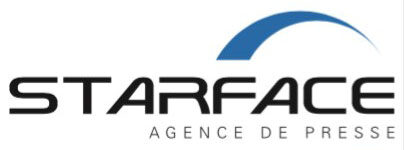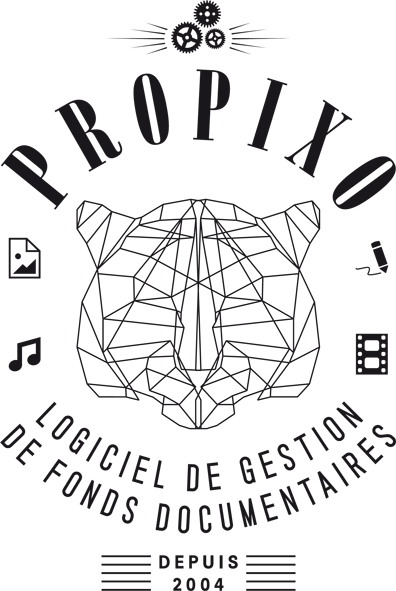He was born on July 6, 1947 rue Dulong in Evreux, he died on December 18, 2019 in Evreux. “I must have made big messes in my previous lives. Because to end your life in the house where you were born, when you have toured the planet 20 or 30 times, you must have been messed up. The punishment is heavy ”confided Sylvain Julienne to La Dépêche, the local newspaper three months before his death.
Sylvain Julienne, for me, is first of all the silhouette of a beatnik photographing for the press agency Gamma the Pinochet coup d’etat the end of Allende’s dream. A guy with strong shoulders to carry the heavy vintage photo bags. A guy who, already young, hardly had any hair on the top of his head, but who let it grow to the shoulders. A Julian Beck (1925-1985) lookalike from the Living Theater, the mug of a heroes of the seventies. “A daredevil whom I loved very much. The kind of photographer who is not given orders or advice, “said Eliane Laffont ex-Gamma-Sygma when she learned he had passed away.
Besides, he started in journalism while working for The Village Voice. “I am 21 years old in New York! I published my first photos in The Village Voice. A job that earned me a chase in Central Park after a sit-in in Harlem roused the American cops [i] “.
Return to France with an address given by Jack Burlot then photographer for Life. “Göksin Sipahioglu gave me the means to go to Northern Ireland. I photographed many demonstrations and sympathized with the IRA commandos. They let me take pictures after I had transported explosives, under the seat of my Mini Morris. It was a test. I was then able to photograph the IRA guys with stockings over their heads. One of these photos made the cover of Time magazine. “He told me in October 2018.
“I stayed maybe two years with Sipa and then I joined Gamma and I left for Chile”. Chas Gerretsen made a nice picture of him there. “At the time of Allende’s death, Sylvain Julienne was working for Gamma,” said Hubert Henrotte when he learned of his death. It was a few months after the Gamma-Sygma split. “He did something remarkable and rare at that time, he had one of his friends bring back the films of Sygma at the same time as his own for Gamma, it did not please them.” In Orly, the bikers of the two agencies almost came to blows wrote Hubert Henrotte in his memories book “The world in the eyes”.
“A few months later, back from Chile, Henrotte announced that he had set up his own agency and offered me to work for Sygma. I went to Cambodia several years ”. In Cambodia, after having risked his life a thousand times, he witnessed in April 1975 the capture of Phnom Penh by the Khmer Rouge, he was held prisoner for more than two weeks in the French embassy with other refugees.
“I met Sylvain in 1970 in New York on a bench in Central Park, we lived there during the hippy years and worked together for four years” says Jack Burlot who then worked for Life Magazine “We were very close friends during these years of reporting. Our last report was Cyprus during the invasion by the Turks. We were then professionally competitors, him at Sygma, me at Gamma but faithful in friendship. Sylvain’s reporting years have always been marked by a deeply human commitment ”.
Of this great humanity there is a fact that marked all the professionals at the time: in Cambodia “One day Sylvain Julienne returned from the fighting with two children who survived a massacre. Phalla a two-year-old girl who did not survive dehydration and Phally a little older, covered with shrapnel. He succeeded in getting her out of the country with false papers when the Khmer Rouge arrived to bring her back to France and adopt her. ”
“Damn it!” Said Patrick Chauvel when I told him the sad news. “It is not possible, I spoke to him a week or two ago … Unbelievable! I have known him well in Cambodia, Lebanon and Iran. In Cambodia we were a hell of a band with Françoise Demulder, Al Roskoff and him. A guy full of talents Sylvain. Clever. Bold but always sincere. In Iran, he took incredible photos. Another very good one that we don’t talk enough about! ”
Sylvain Julienne “covered” among other reportages: the carnation revolution in Portugal, the war in Lebanon, the departure of the Shah from Iran and the arrival of Khomeini, “unforgettable photos of Iran” says Jean-François Leroy director Visa for image.
It would take a book to narrate all the adventures of Sylvain Julienne. “I would like to tell you about the night spent in the pit of a garage with three Cambodian non-commissioned officers when we were surrounded by the Khmer Rouge and that every minute we were afraid of seeing them come in” he wrote in the Eye of Photography last September 10 .
He was hoping to write it. In the meantime he was publishing his memories on his Facebook page: his fears like his knocks. Twenty years ago he hung up his cameras after his last wonderful adventure: having a son at 50! “No more risking my life,” he said. He wanted to recover his photo archives for this book, for his son Sahel. Only now, the XXth century was over.
Gone were the fighting days. No more ganja, opium and Bali mushrooms. Gone were the days when the handshake served as an agency photo deposit voucher. After Vietnam, Cambodia, South and Central America, the Middle East, the Wall Street little gray men had decided to change the type of war. They were now dealing with news, especially photojournalism. It must be said that with the photos of Vietnam, Chile and elsewhere, they must have lost quite a bit of money.
They began to deal with the press and its independent press agencies where Sylvain Julienne and his friends nested. No more royally paid assignments with additional expense reports. No more fun. They drew the Internet, removed advertising from newspapers and installed cost killers everywhere from New York to London to Paris and all the European capitals. The information market collapsed and Bill Gates was able to buy the Sygma agency before scuttling it. Make way for Shutterstock, Getty Images, Adobe and company.
Sylvain Julienne, like other backpackers of this generation, ignored this “new world”. He contacted me to find out why Sipa and Gamma wanted him to sign a disclaimer before returning his photos to him. “You know, the agencies lost a lot of money in lawsuits for image loss,” I explained to him. He did not understand. He was not alone and he was not wrong either. With Gamma and Sipa, it could work out, but the scandalous bankruptcy of Corbis-Sygma blocked his photos in the midst of tens of millions of others. And the liquidator Maître Gorrias, has not responded to anyone for a long time. Photographer Francis Apesteguy, his neighbor in Normandy, put him in contact with the PAJ association of Thierry Secretan. They have drafted a petition which has remained unanswered to date.
“Here, I am disoriented to no longer hear your smiling voice” confides very touched Francis Apesteguy “I would never have dared set foot in his field, as a paparazzo I received slaps, while he received bombs … We both filled the pages of magazines with photographs, him with truth and I with futility. Passionate you were robbed, we denounced it. It was your last war. See you soon friend. ”
This scandal has obscured the end of life of this largely unrecognized reporter who, with philosophy, affirmed on Facebook “I had the life I wanted” and seemed to regret nothing.
We, photojournalism enthusiasts, regret not seeing his photo archives and no doubt his colleagues and I will do everything to see that his son recover them. Don’t say you weren’t warned.
Michel Puech
[i] Page 22 in 40 ans de photojournalisme. Génération Sipa de Michel Setboun et Sylvie Dauvillier. Editions de La Martinière 2012
- « The Stringer »
« Trang Bang, j’ai toujours l’impression que c’est arrivé hier » par David Burnett - 19 décembre 2025 - « The Stringer »
L’enfer est pavé de bonnes intentions,
mais ça reste l’enfer ! - 4 décembre 2025 - Patrimoine photographique de Sygma
Un jugement hors du bon sens,
enterre un scandale ! - 28 novembre 2025








